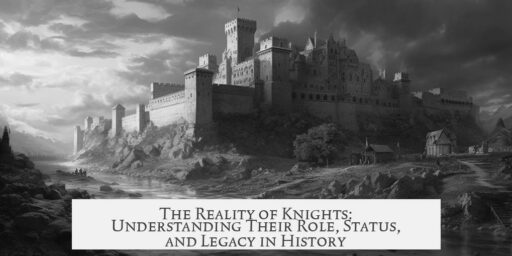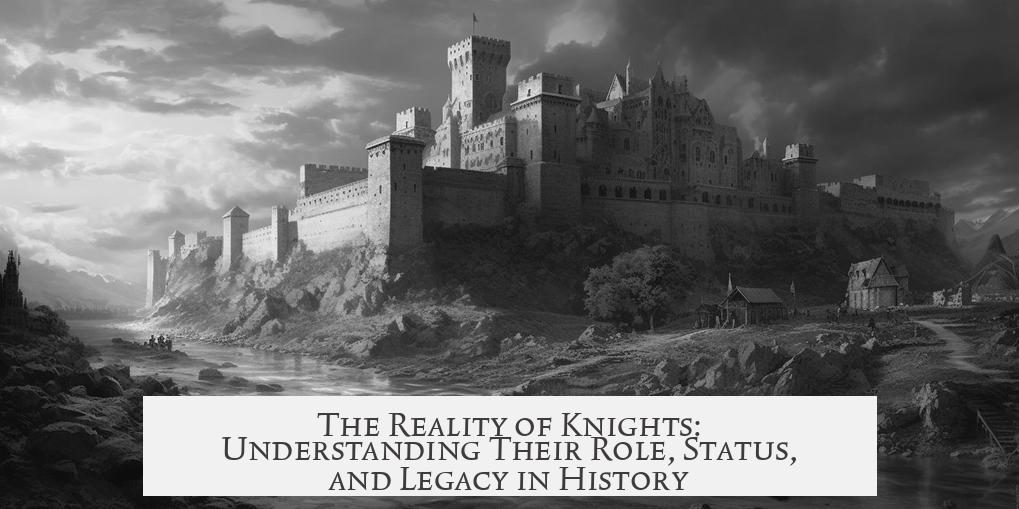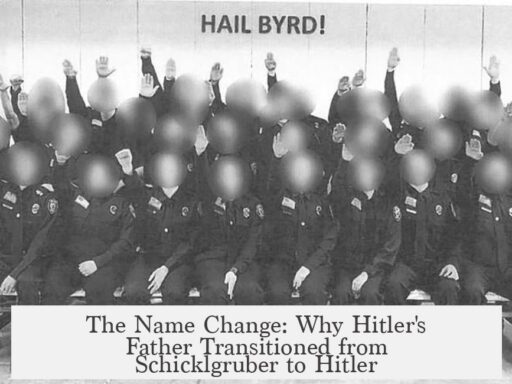A knight is someone formally recognized through a ceremonial initiation called knighting, typically involving the girding of a sword belt, spurs, or a symbolic touch with a sword or hand. This status became prestigious during the high and late medieval periods. It distinguished those who passed this ritual from other heavily armored cavalry who fought in similar ways but lacked the official title.
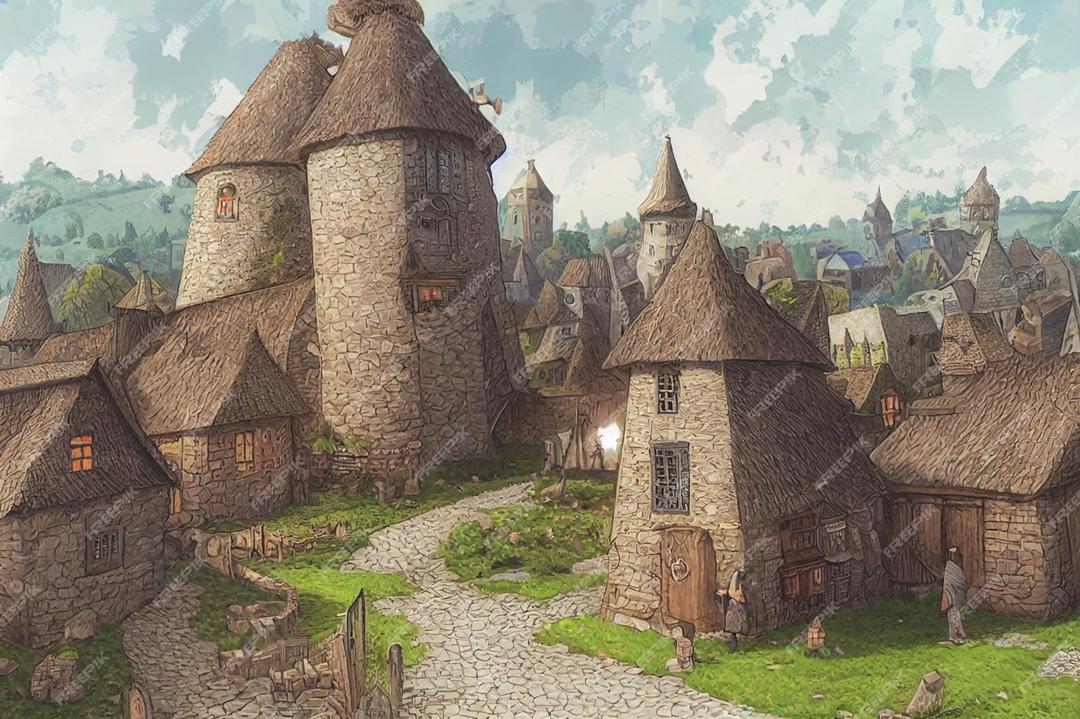
Knighthood symbolized social rank and honor. Over time, even royalty like princes and kings sought this rank to enhance prestige. In England, knighthood sometimes came by decree, granted to those with sufficient income rather than battlefield achievement.
Knights wore heavy armor and rode warhorses, but not everyone using this equipment was a knight. Many warriors had similar roles but different titles or social statuses. For example, at the Battle of Agincourt, many of the heavily armored fighters held the rank of esquire or were called gentlemen if their noble lineage was incomplete.
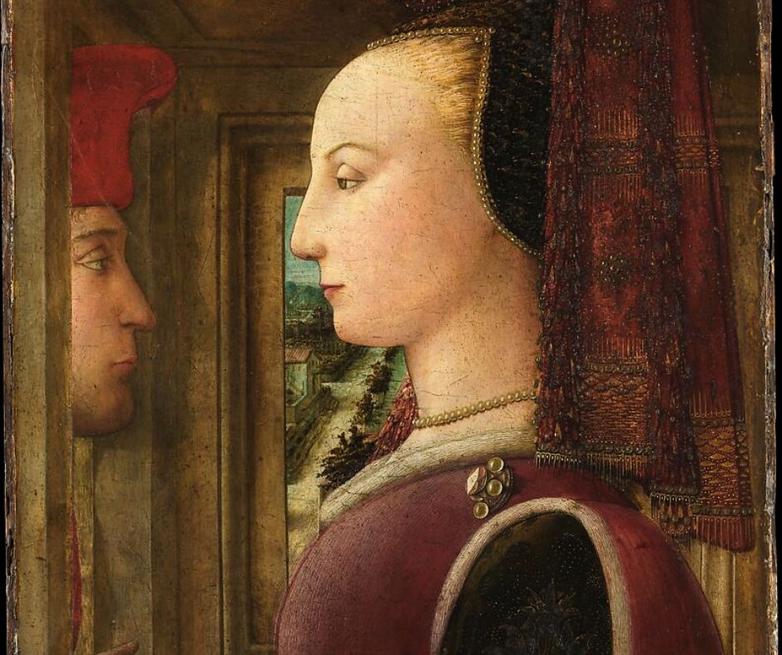
Other related classes included mounted serjeants who held land as a tenure called serjeantry. Their land reverted to the lord after death, unlike a knight’s manor, which stayed in family control. In Germany, a unique group called the ministeriales served as armored cavalry but were often unfree nobles rather than independent knights.
Interestingly, some men capable of fighting as armored riders deliberately avoided knighthood. This hesitation stemmed from additional obligations, such as public service and local governance roles expected from knights. As a result, by the late Middle Ages, knights represented only a small portion of the heavy cavalry force.
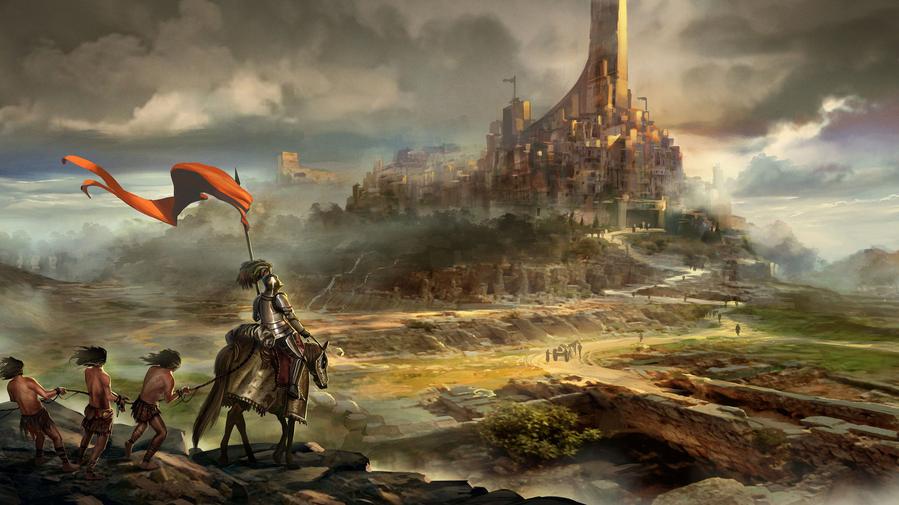
| Aspect | Details |
|---|---|
| Definition | Person formally knighted via ceremony |
| Status | Prestigious rank, often sought after by nobility |
| Equipment | Heavy armor, warhorse |
| Non-knight heavy cavalry | Esquires, gentlemen, serjeants, ministeriales |
| Additional duties | Local governance, military service |
- Knighthood requires a formal ceremony.
- Rank conveys social prestige and obligations.
- Not all armored cavalry were knights.
- Knighthood carried duties beyond warfare.
- Knights formed a minority of medieval heavy cavalry.
What is a Knight? The Truth Behind the Medieval Warrior
When you hear the word knight, what pops into your head? Towering figures clad in shiny armor, clanking around on horseback, jousting at a grand tournament? That’s the popular image, thanks to movies and fairy tales. But what is a knight really? Let’s cut through the myths and plunge into the real deal.
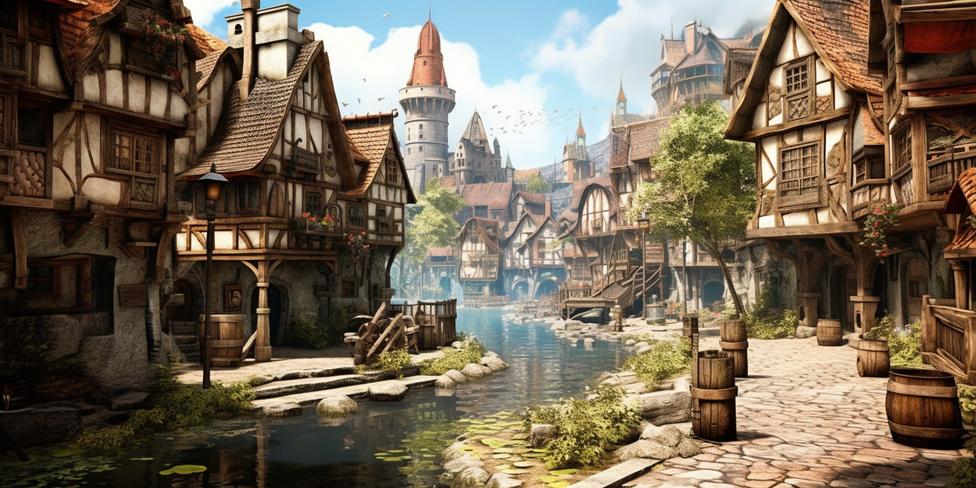
The Knight: More Than Just Armor and Swords
Simply put, a knight is someone who has been officially knighted. This means they go through a special initiation ceremony, often involving the symbolic girding of a sword belt and the donning of spurs. Sometimes, instead of a sword gird, they receive a flat blow from a sword or a touch from a hand on the shoulder or head. This ritual, known as the “dubbing” or “investiture,” is what truly defines a knight—not just riding in heavy armor or fighting on horseback.
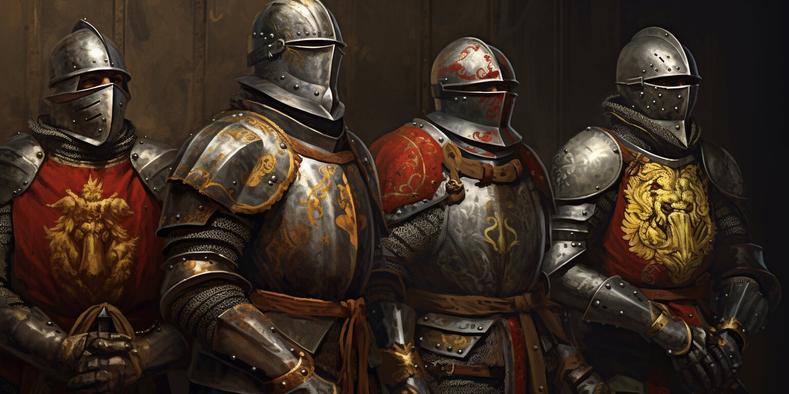
That flashy armor? Warhorses? They’re on the knight’s résumé, sure—but without the ceremony, heavy cavalrymen were not necessarily “knights.” A lot of people fancy themselves a knight just because they screamed “Charge!” on horseback. Nope.
Knighthood: A Status Symbol That Even Kings Wanted
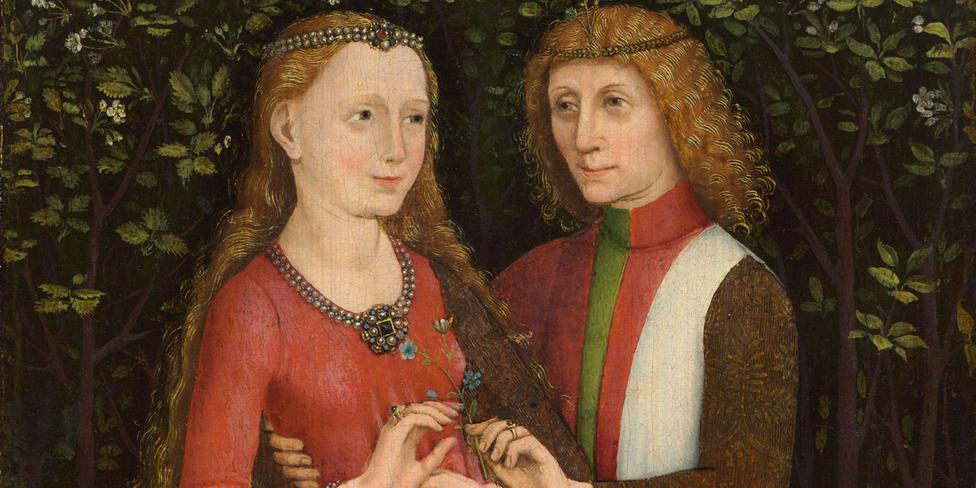
Over time, the title of knight grew beyond battlefield bravado. It became a prestigious rank. So prestigious, in fact, that even princes and kings sought the honor of knighthood. If royalty chased after it, you know it was big deal.
In England, the concept went so far as to link wealth with knighthood. Men who earned above a certain income threshold were sometimes knighted by decree, practically a tax for having coin—or was it a reward? This blurred the knight’s image from purely a warrior to a social rank and privilege.
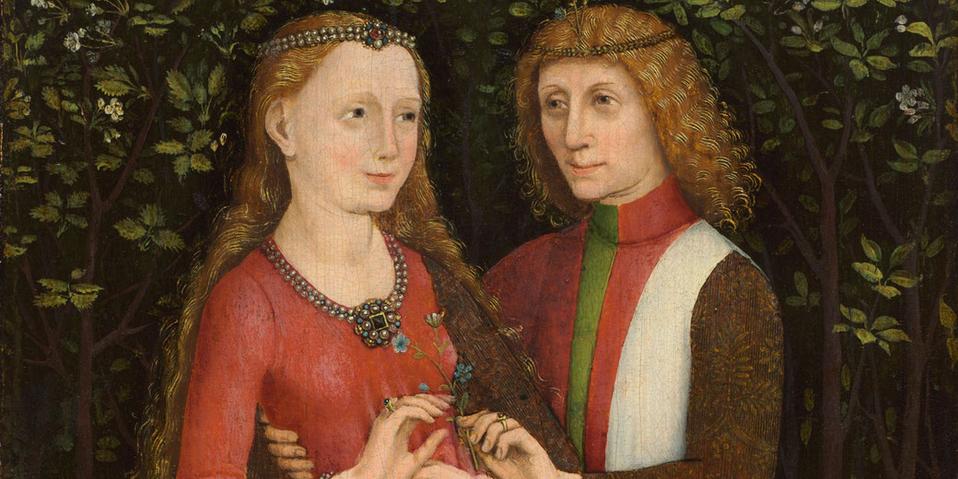
Knight vs Heavy Cavalry: Not the Same Netflix Series
Thirty armored men charging into battle doesn’t mean they’re all knights. At the famous Battle of Agincourt, many “knights” were actually esquires or simply “gentlemen.” Esquires were noble but not quite noble enough to be knights, while gentlemen were often of lesser nobility. They supported knights but weren’t formally knighted themselves.
Then there were the mounted serjeants. They fought similarly but held a different social contract. They owned serjeantry—a plot of land tied to their service—which reverted to the lord when they died. Knights generally held manors outright.
In Germany, a twist: some armored warriors called ministeriales weren’t even free men. These ministeriales were noble-like but bound by service. So “knight” wasn’t the catch-all for every armored dude on a horse. Social nuance ruled the day.
Sometimes, Avoiding Knighthood Made Sense
Not everyone with the means to fight as armored cavalry jumped at the chance to become a knight. Why? Because knighthood came with rules—public duties like serving in local government, judicial responsibilities, and tax obligations. Some wealthy men preferred to ride armored and fight without the extra civic baggage of knighthood.
By the late Middle Ages, knights formed a surprisingly small minority among heavy cavalry. The heavy armor guys outnumbered the knights many times over.
Stories From the Battlefield and Manor
Picture Sir Geoffrey, a fictional noble from 15th century England. He’s got enough wealth and war skills to become a knight. Yet, he dodges the knighting ceremony. Serving in the local court is a nightmare, and he prefers collecting rents quietly to dealing with political squabbles. Meanwhile, his squire dreams of becoming knighted one day, fully aware the ritual transforms a man’s life—not just his rank.
Meanwhile, over in Germany, Count Otto commands his ministeriales—armored warriors bound not by noble birth but by service contracts. They bear arms like knights, fight like knights, yet don’t carry the knight title. They serve the duke faithfully, holding lands and lives in a complex feudal web.
What Does This Mean Today?
Understanding the knight’s true nature helps cut through Hollywood glamour and medieval myths. Knights are not just armored warriors. They’re a distinct class formally recognized by ceremony and social responsibilities.
So next time you hear someone boast, “I’m a knight in shining armor,” ask them if they’ve gone through the dubbing ceremony. You might get a puzzled look.
Practical Tips If You Want to Embrace Your Inner Knight (or Just Feel Like One)
- Research local knightly orders—some modern groups keep the traditions alive, sometimes with ceremonial dubbings for fun or honor.
- Pick up horseback riding and medieval history to get a true feel for the knight’s lifestyle beyond the Hollywood stereotype.
- Explore medieval reenactments—they bring to life those social nuances: squire, esquire, mounted serjeant, and knight roles.
Remember, being a knight historically meant more than swinging a sword—it meant accepting social duties, pledges, and sometimes a whole new lifestyle.
In Conclusion: Knightly Reality vs. Fantasy
The knight’s role is both simpler and more complex than tales suggest. At its core is the ceremony of knighthood—a ritual setting apart the knight from fellow soldiers. Around that, grew an entire social order, duties, and expectations.
Armored on horseback? Maybe. Knight? Only if you’ve been knighted.
Knowing this gives us a sharper image of medieval history and a cooler appreciation for those elusive knights who shaped it.
